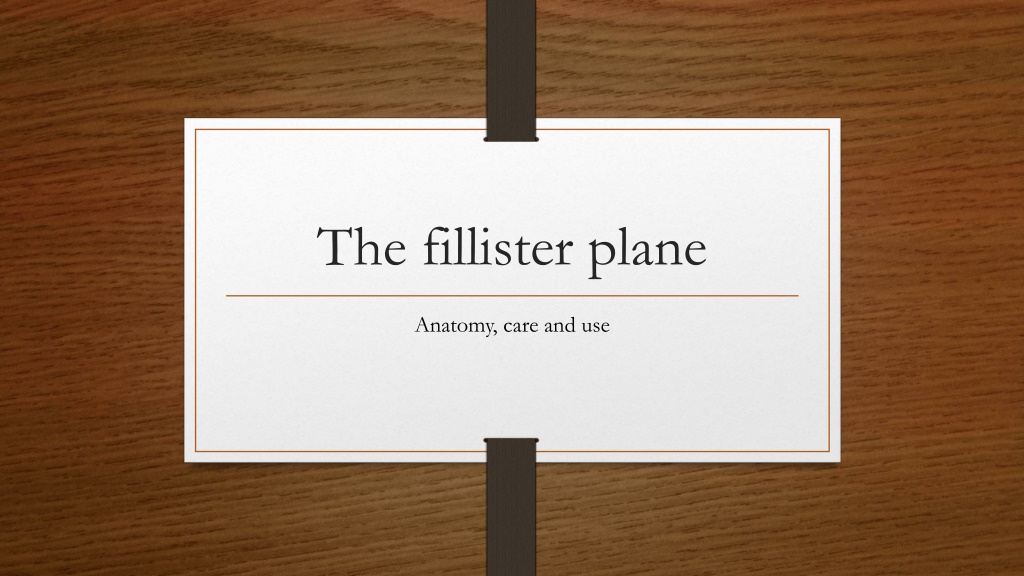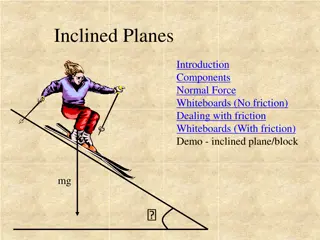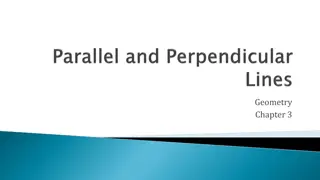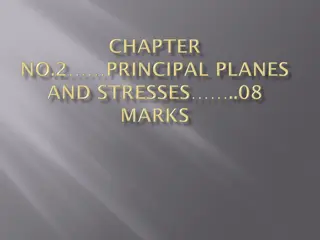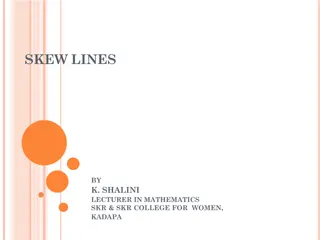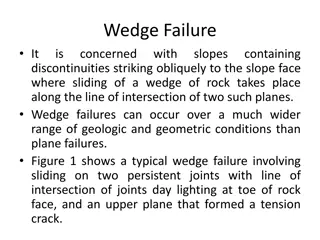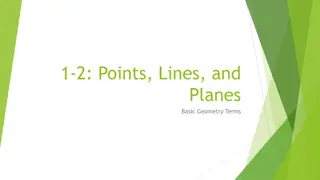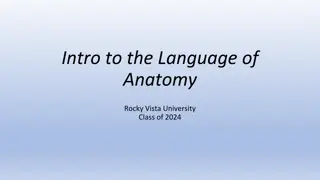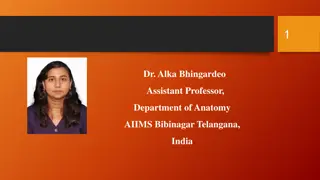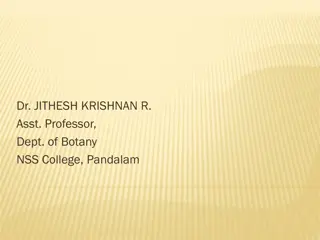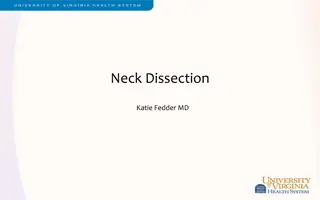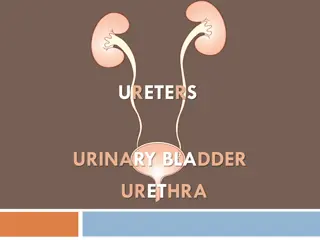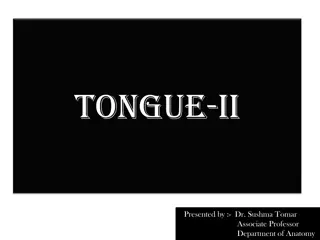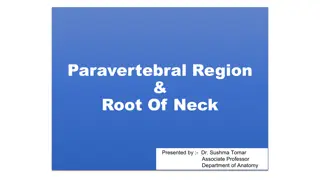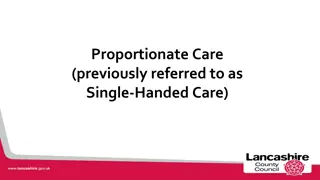Comprehensive Guide to Fillister Planes: Anatomy, Care, and Use
This detailed resource covers the anatomy, care, and usage of fillister planes, a type of rebate plane used for cutting accurate rebates. Learn about different models, how to set up and maintain a fillister plane, and its versatile applications in woodworking. Explore images illustrating key components and steps for using this essential hand tool effectively.
Download Presentation

Please find below an Image/Link to download the presentation.
The content on the website is provided AS IS for your information and personal use only. It may not be sold, licensed, or shared on other websites without obtaining consent from the author. Download presentation by click this link. If you encounter any issues during the download, it is possible that the publisher has removed the file from their server.
E N D
Presentation Transcript
The fillister plane Anatomy, care and use
The fillister plane This resource will introduce you to the fillister plane, and explain how to use it. As with all hand tools, practice is essential. The information provided here will help you to get started, but the more you use it the better the results you ll get. By the end of this resource, you will know what a fillister plane is, the steps to getting your plane in working order, and how to start making your first cuts.
What is a fillister plane? Fillister planes are a type of rebate (or rabbet) plane. The main differences between a normal rebate plane and a fillister are the cutting guides. These help to ensure a specific depth and width of rebate. Duplex fillisters are standard, with two positions for the blade. A Record 78 duplex fillister plane
What is a fillister plane? The normal manufacturers produce(d) fillister planes. The pictures in this resource show a Record 78, but similar models are available from Stanley and Woden, among others. Differences are minor a front handle, two rods instead of one for the fence and so on. A Record 78 duplex fillister plane
What is a fillister plane used for? Fillister planes are used to cut fast and accurate rebates. This is simple when cutting along the grain, and a spur is usually included to facilitate cross- grain cutting. Duplex planes are more versatile. With the blade at the front and guides removed, it becomes a bullnose plane. A rebate in pine this took just a couple of minutes with a freshly sharpened blade
Anatomy of the plane The depth stop and inside of the fence The fence, blade, and adjustment lever
Setting up the plane As with any other plane, you need to do some setup. This is true whether it s brand new or a second hand plane. First, if you bought a used plane, clean it up. Get rid of surface rust with medium-grit abrasive paper, use wire wool, toothpicks etc to get rid of grime and gunk. This second hand plane is in good condition with just some paint wear and surface rust. 20 minutes will get it good as new, but not as pretty.
Setting up the plane Next, check the sole is flat. A known flat surface (plate glass, marble or granite tile etc) and some 120 grit abrasive paper will do the job well. A slight hollow in the heel is no problem, as long as the toe is flat. You can see your progress by looking at the polishing of the sole. Flattening the sole with sandpaper clamped to a marble tile (50p end of stock this needn t be expensive).
Setting up the plane Once the plane body is done, move on to the iron. Again, clean up any rust first, and check for major dings in the edge. If there s a big chip, you might need to use a grinding wheel to take that out. The chip in this blade was taken out with 120 grit abrasive paper and a little patience.
Sharpening fillister planes Next, you need to sharpen your iron. The angle may not be the same as a bench plane, and the fillister s iron may be an odd shape. This can make using a honing guide tricky, but if necessary you can make a minor change to the angle. The same set up as for working the sole, with a honing gauge to maintain the angle
Sharpening irons Paul Sellers demonstrating sharpening with diamond stones: https://www.youtube.com/watch?v=gE 4yVgdVW7s Rex Krueger demonstrating sharpening with abrasive paper: https://www.youtube.com/watch?v=gY 6pOKQRw74 There are many, many video guides to sharpening plane irons you can watch. Some suggested links are given here. Remember: you won t need half a dozen expensive Japanese water stones to get started. You can get by with various grits of abrasive paper and a flat surface. A honing guide is also useful when starting. Buy stones when you want/need them.
Sharpening spurs The spur used to help with cross- grain cutting is a little tricky to sharpen. Some are mostly conical, some have three points. The important thing is to avoid reducing the overall size as much as possible, and to maintain the radius of the cutting edge. You may need to use a file, and pliers can help to grip it. Grip the spur with pliers and carefully sharpen with a file. A saw file as here works very well.
Rebuild the plane Once everything is clean and sharp, give each piece a coat of light oil and reassemble it. Getting the iron in can be a little awkward. Try to seat it so the adjustment lever has room to move, and the edge is slightly above the sole. The plane should look like this when you put it back together no spare bits!
Setting the plane Making the cut is simple. Set the depth stop and fence to control the depth and width of the rebate. If you are cutting cross-grain, remember to set the spur into position before setting the depth stop. Register the depth stop and fence to the sole of the plane. A machinist s square works well for this.
Cutting the rebate When starting the cut, make passes with the plane and slowly adjust the blade depth till you re taking light shavings. This is especially true for cross-grain cuts, where a much lighter shaving is needed. For cutting along the grain, especially with soft wood, you can take a heavier shaving quite easily. A few second s worth of shavings good for firelighters!
Cutting the rebate Start your cuts near the end of the stock so you take short passes. Lengthen these gradually until you ve cut along the whole length. You may find the throat of the plane clogs easily this is common, but the open sides makes it easy to clear. Start with short cuts, registering the sole and fence against the top and side of the stock.
Summary The fillister plane is mainly used for cutting rebates, but can be more versatile. Once the initial work is done to get it set up, it is quick to set the guides for a specific job. The iron and spur can be a little fussy to get properly sharpened, but a little practice is sufficient to get the hand of it. The plane can be a little prone to clogging up in use, but it will produce crisp, clean rebates easily.
